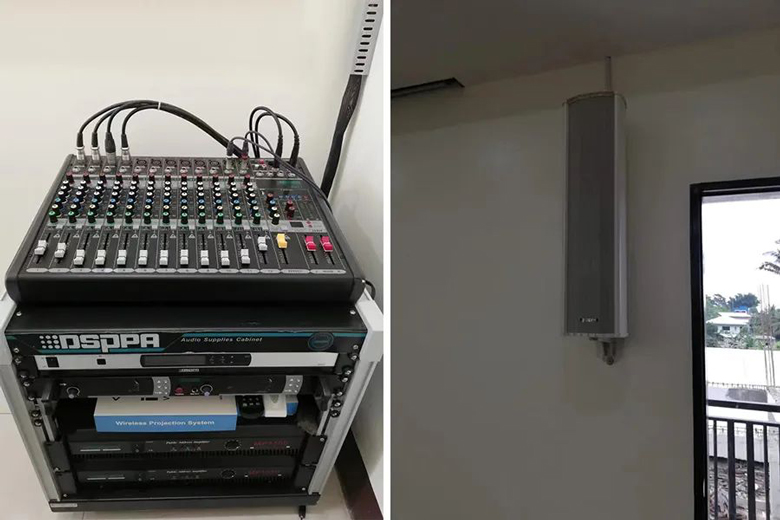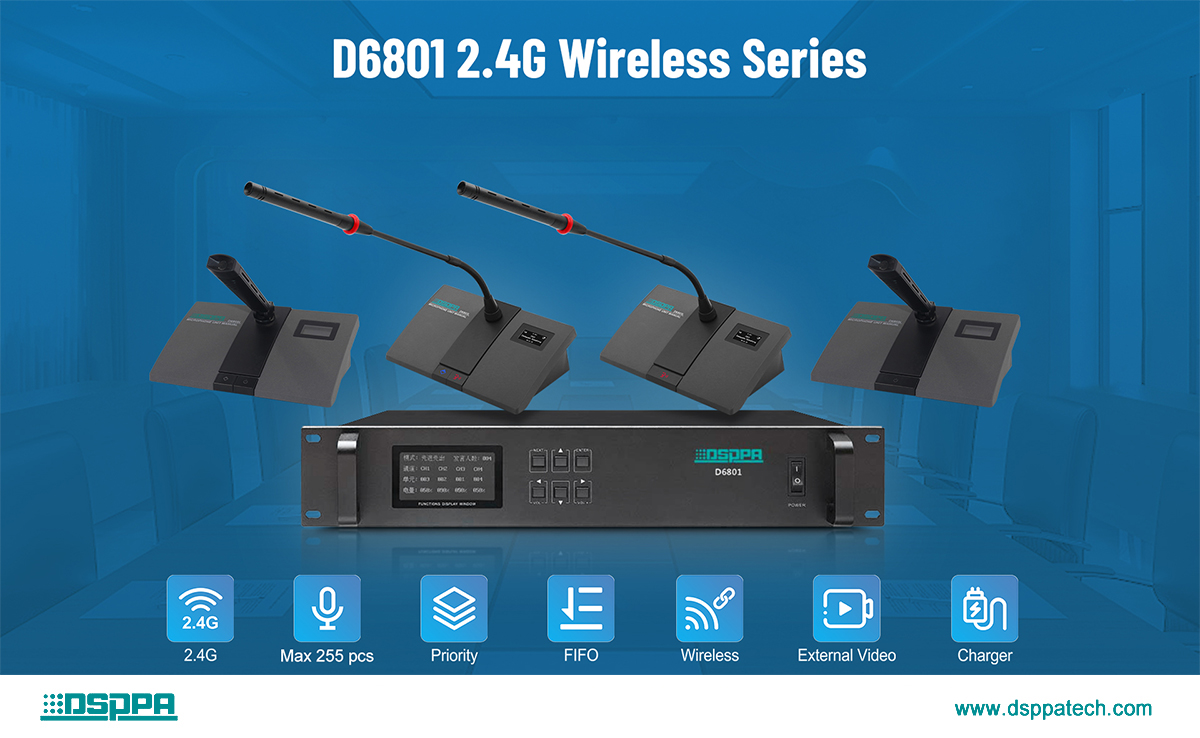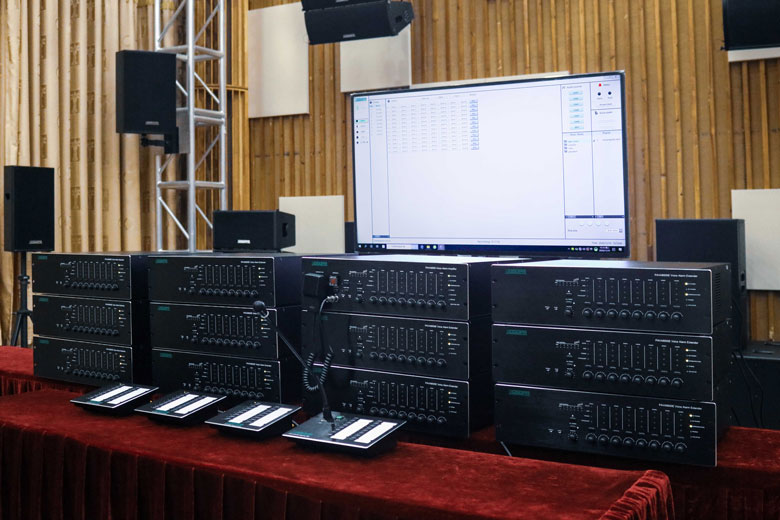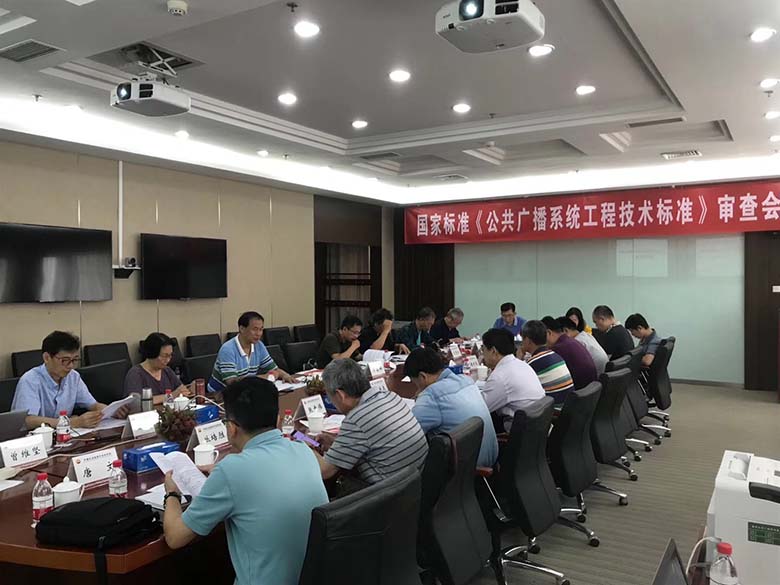
With the rapid development of international information technology, people's requirements for the efficiency and quality of the meeting are increasingly high, the conference system has also experienced from a simple conference sound reinforcement to the current integrated high-definition video, high-fidelity audio, high-speed computer networks, computer hardware and software multimedia conference system. One of the main and most basic conference audio and sign-in, voting data transmission technology has also undergone the development process from analog to digital.
From the process of technological development, the development of the conference system has gone through three generations.
The first generation of conference systems using all-analog technology; the second generation of conference systems on the basis of the original analog technology, the introduction of digital control technology, that is, "analog audio transmission + digital control technology"; the third generation is the use of all-digital technology, that is, "digital audio transmission + digital control technology ". Among them, the second and third generation of the conference system due to the application of digital technology, the system's intelligence level significantly improved, so also known as digital conference system or intelligent conference system.


The first-generation conference system is a conference discussion system with full analog technology. The system structure and functions are relatively simple. The audio is transmitted and processed in the form of analog signals. Users only need to press a switch to speak. There is no intelligence in the system. The central controller is mainly suitable for small conference rooms.
The second-generation conference system introduces digital control technology on the basis of retaining audio analog transmission, and realizes functions such as speech management, voting, meeting sign-in, simultaneous interpretation and video tracking.
Due to the adoption of digital control technology, the intelligence level of the second-generation conference system has been significantly improved, and the functions of the system have become increasingly rich. These improvements have greatly improved the efficiency of the conference.
(1).jpg)
However, since the audio transmission in the system still uses the analog mode, the signal line of the conference unit must be separated from other equipment lines (such as lights, power cables, TV camera cables, speaker cables, etc.) The transmission will be distorted due to interference, but this requirement is difficult to achieve in many sites due to the limitations of the building structure; in addition, the attenuation of the analog audio signal level increases with the transmission distance, so the analog audio signal is transmitted over long distances. (over 50 meters), the problem of poor sound quality is difficult to solve.
The third-generation conference system is an all-digital conference system, and the audio signals and control signals in the system are transmitted and processed in the form of digital signals. Its core technology is multi-channel digital audio transmission technology, that is, through the use of analog/digital (A/D) and digital/analog (D/A) conversion technologies, the audio signals collected by the conference equipment are digitized and processed. After encoding, it is transmitted on the communication line to realize the simultaneous transmission of multiple audio signals on a physical line.
 【DSPPA Demo】PAVA8000 EN54 Voice Evacuation SystemNovember 12, 2020Abstract: DSPPA PAVA8000 EN54 Voice Evacuation SystemToday, we are gonna show you a demo about our PAVA8000 EN54 Voice Evacuation System.PAVA8000EN54 Voice Evacuation System can not only support manua...view
【DSPPA Demo】PAVA8000 EN54 Voice Evacuation SystemNovember 12, 2020Abstract: DSPPA PAVA8000 EN54 Voice Evacuation SystemToday, we are gonna show you a demo about our PAVA8000 EN54 Voice Evacuation System.PAVA8000EN54 Voice Evacuation System can not only support manua...view The National Standard Approval Meeting held in BeijingJuly 19, 2019The National Standard Approval Meeting held in BeijingThe approval meeting of the National StandardTechnical standard of public address system engineeringis held in Beijing on July 16, 2019. Xue Chang...view
The National Standard Approval Meeting held in BeijingJuly 19, 2019The National Standard Approval Meeting held in BeijingThe approval meeting of the National StandardTechnical standard of public address system engineeringis held in Beijing on July 16, 2019. Xue Chang...view